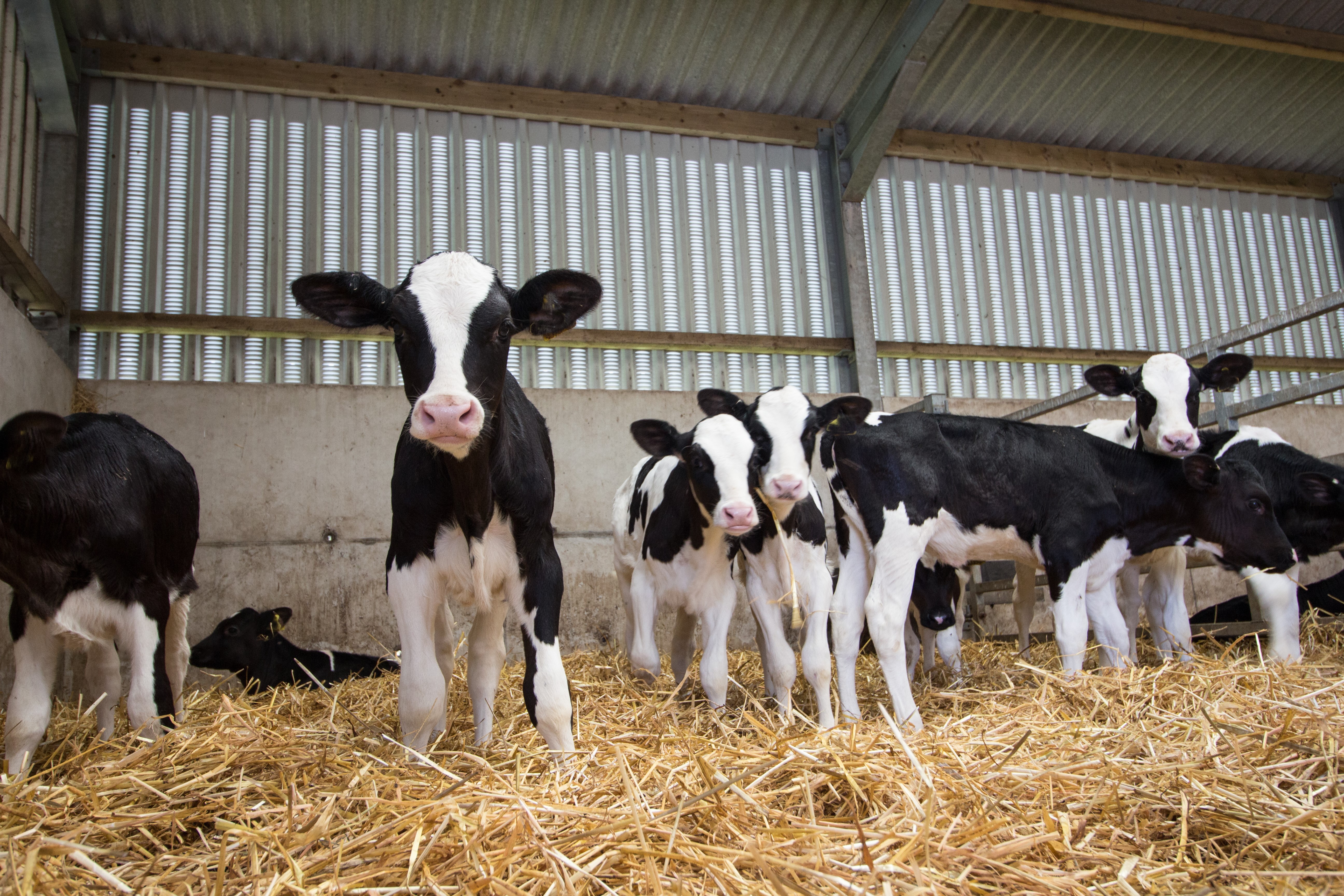Lung consolidation can recur and persist in dairy calves despite early diagnosis and multiple antibiotic treatments according to research in the Journal of Dairy Science®
Champaign, IL, November 16, 2020 – Respiratory disease adversely affects preweaned dairy calves in the short and long term, contributing to morbidity and mortality, decreased growth, and loss in milk production. Approximately 12% of calves in the United States are treated for respiratory disease, most commonly presenting as bronchopneumonia. Systemic antibiotic therapy is the most common treatment for calves with this diagnosis. In an article appearing in the Journal of Dairy Science, scientists from University of Wisconsin, Madison, and Michigan State University assessed the effects of early antibiotic therapy on preweaned calves diagnosed with respiratory disease using respiratory scoring and portable lung ultrasound.
Researchers examined calves from two herds in southern Wisconsin twice per week from three to five days of age until weaning at approximately fifty-six days. The examination included a clinical respiratory examination, lung ultrasound, fecal score, and heart girth measurement. For diagnosis, a positive case was determined with a combination of a calf’s clinical respiratory score and its lung ultrasound score. “Although our method of diagnosis is not considered a gold standard, it likely represents the closest, most practical way that we have at the moment to characterize consequential lung disease in dairy calves,” said lead author Theresa Ollivett, PhD, Department of Medical Sciences, School of Veterinary Medicine, University of Wisconsin, Madison, USA.
Of the 357 calves enrolled in the study, 289 calves developed respiratory disease. Calves that tested positive for respiratory disease were randomly assigned to receive either an antibiotic labeled to treat respiratory disease or a placebo with an equal amount of saline solution at first detection. “In theory, the earlier in the pathologic process that therapeutic drug levels are achieved within the parenchyma of the lung, the faster bacterial replication and neutrophil infiltration should cease, stifling the progression of lung lesions and hastening the resolution of lung consolidation,” said Ollivett.

Caption: A new study published in the Journal of Dairy Science suggests that lung consolidation can recur and persist in dairy calves despite early diagnosis of disease and multiple antibiotic (Credit: istock.com/Deb Drury).
Antibiotic therapy with one dose of a long-acting macrolide delayed progression of lung consolidation and re-treatment, reduced mortality, and increased growth. “We hope this study will stimulate more thought and research on how antimicrobial stewardship is addressed and, further, will help to quantify treatment success of antibiotic protocols on farms and in research settings,” said Ollivett.
The study indicated short-term benefits of early antibiotic therapy after diagnosis via respiratory scoring and lung ultrasound. Overall, however, lung consolidation recurred and persisted to weaning, despite early diagnosis and treatment, and the authors call for more research to address antimicrobial stewardship and treatments in on-farm and research settings.
Notes for editors
The article is “Randomized clinical trial to assess the effect of antibiotic therapy on health and growth of preweaned dairy calves diagnosed with respiratory disease using respiratory scoring and lung ultrasound,” by Elizabeth Binversie, Pamela Ruegg, David Combs, and Theresa Ollivett. (https://doi.org/10.3168/jds.2019-18044). It appears in advance of the Journal of Dairy Science, volume 103, issue 12 (December 2020), published by FASS Inc. and Elsevier. It is available at https://www.journalofdairyscience.org/article/S0022-0302(20)30839-0/fulltext.
Full text of the article is available to credentialed journalists upon request. Contact Ken Olson at +1 630 237 4961 or keolson@prodigy.net to obtain copies. Journalists wishing to interview the authors should contact the corresponding author, Theresa L. Ollivett, University of Wisconsin, Madison, at ollivett@wisc.edu.
About the Journal of Dairy Science
The Journal of Dairy Science® (JDS®), an official journal of the American Dairy Science Association®, is co-published by Elsevier and FASS Inc. for the American Dairy Science Association. It is the leading general dairy research journal in the world. JDS readers represent education, industry, and government agencies in more than 70 countries, with interests in biochemistry, breeding, economics, engineering, environment, food science, genetics, microbiology, nutrition, pathology, physiology, processing, public health, quality assurance, and sanitation. JDS has a 2019 Journal Impact Factor of 3.333 and 5-year Journal Impact Factor of 3.432 according to Journal Citation Reports (Source: Clarivate 2020). www.journalofdairyscience.org
About the American Dairy Science Association (ADSA®)
The American Dairy Science Association (ADSA) is an international organization of educators, scientists, and industry representatives who are committed to advancing the dairy industry and keenly aware of the vital role the dairy sciences play in fulfilling the economic, nutritive, and health requirements of the world's population. It provides leadership in scientific and technical support to sustain and grow the global dairy industry through generation, dissemination, and exchange of information and services. Together, ADSA members have discovered new methods and technologies that have revolutionized the dairy industry. www.adsa.org
About Elsevier
Elsevier is a global information analytics business that helps scientists and clinicians to find new answers, reshape human knowledge, and tackle the most urgent human crises. For 140 years, we have partnered with the research world to curate and verify scientific knowledge. Today, we’re committed to bringing that rigor to a new generation of platforms. Elsevier provides digital solutions and tools in the areas of strategic research management, R&D performance, clinical decision support, and professional education; including ScienceDirect, Scopus, SciVal, ClinicalKey, and Sherpath. Elsevier publishes over 2,500 digitized journals, including The Lancet and Cell, 39,000 e-book titles and many iconic reference works, including Gray’s Anatomy. Elsevier is part of RELX, a global provider of information-based analytics and decision tools for professional and business customers. www.elsevier.com
About FASS Inc.
Since 1998, FASS has provided shared management services to not-for-profit scientific organizations. With combined membership rosters of more than 10,000 professionals in animal agriculture and other sciences, FASS offers clients services in accounting, membership management, convention and meeting planning, information technology, and scientific publication support. The FASS publications department provides journal management, peer-review support, copyediting, and composition for this journal; the staff includes five BELS-certified (www.bels.org) technical editors and experienced composition staff. www.fass.org